Torajan
Torajan
misa' kada dipotua, pantan kada dipomate - one opinion makes us live, many egos personal opinion makes us die
The Torajans are an ethnic group indigenous to a mountainous region of South Sulawesi, Indonesia. Their population is approximately 1,100,000, of whom 450,000 live in the regency of Tana Toraja (“Land of Toraja”). Most of the population is Christian, and others are Muslim or have local animist beliefs known as aluk (“the way”). The Indonesian government has recognised this animistic belief as Aluk To Dolo (“Way of the Ancestors”).
The word Toraja comes from the Buginese language term to riaja, meaning “people of the uplands”. The Dutch colonial government named the people Toraja in 1909. Torajans are renowned for their elaborate funeral rites, burial sites carved into rocky cliffs, massive peaked-roof traditional houses known as tongkonan, and colourful wood carvings. Toraja funeral rites are important social events, usually attended by hundreds of people and lasting for several days.
Before the 20th century, Torajans lived in autonomous villages, where they practised animism and were relatively untouched by the outside world. In the early 1900s, Dutch missionaries first worked to convert Torajan highlanders to Christianity. When the Tana Toraja regency was further opened to the outside world in the 1970s, it became an icon of tourism in Indonesia: it was exploited by tourism development and studied by anthropologists.
By the 1990s, when tourism peaked, Toraja society had changed significantly, from an agrarian model—in which social life and customs were outgrowths of the Aluk To Dolo—to a largely Christian society. Today, tourism and remittances from migrant Torajans have made for major changes in the Toraja highland, giving the Toraja a celebrity status within Indonesia and enhancing Toraja ethnic group pride.
 Ethnic Identity
The Torajan people had little notion of themselves as a distinct ethnic group before the 20th century. Before Dutch colonisation and Christianisation, Torajans, who lived in highland areas, identified with their villages and did not share a broad sense of identity.
Although complexes of rituals created linkages between highland villages, there were variations in dialects, differences in social hierarchies, and an array of ritual practices in the Sulawesi highland region.
Ethnic Identity
The Torajan people had little notion of themselves as a distinct ethnic group before the 20th century. Before Dutch colonisation and Christianisation, Torajans, who lived in highland areas, identified with their villages and did not share a broad sense of identity.
Although complexes of rituals created linkages between highland villages, there were variations in dialects, differences in social hierarchies, and an array of ritual practices in the Sulawesi highland region.
 “Toraja” (from the coastal languages’ to, meaning people; and riaja, uplands) was first used as a lowlander expression for highlanders. As a result, “Toraja” initially had more currency with outsiders—such as the Bugis and Makassarese, who constitute a majority of the lowland of Sulawesi—than with insiders.
The Dutch missionaries’ presence in the highlands gave rise to the Toraja ethnic consciousness in the Sa’dan Toraja region, and this shared identity grew with the rise of tourism in the Tana Toraja Regency. Since then, South Sulawesi has four main ethnic groups—the Bugis (the majority, including shipbuilders and seafarers), the Makassarese (lowland traders and seafarers), the Mandarese (traders and fishermen), and the Toraja (highland rice cultivators).
“Toraja” (from the coastal languages’ to, meaning people; and riaja, uplands) was first used as a lowlander expression for highlanders. As a result, “Toraja” initially had more currency with outsiders—such as the Bugis and Makassarese, who constitute a majority of the lowland of Sulawesi—than with insiders.
The Dutch missionaries’ presence in the highlands gave rise to the Toraja ethnic consciousness in the Sa’dan Toraja region, and this shared identity grew with the rise of tourism in the Tana Toraja Regency. Since then, South Sulawesi has four main ethnic groups—the Bugis (the majority, including shipbuilders and seafarers), the Makassarese (lowland traders and seafarers), the Mandarese (traders and fishermen), and the Toraja (highland rice cultivators).
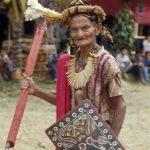
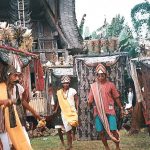
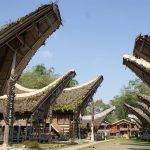
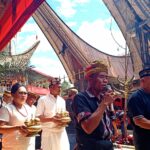
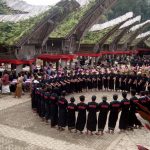
Society
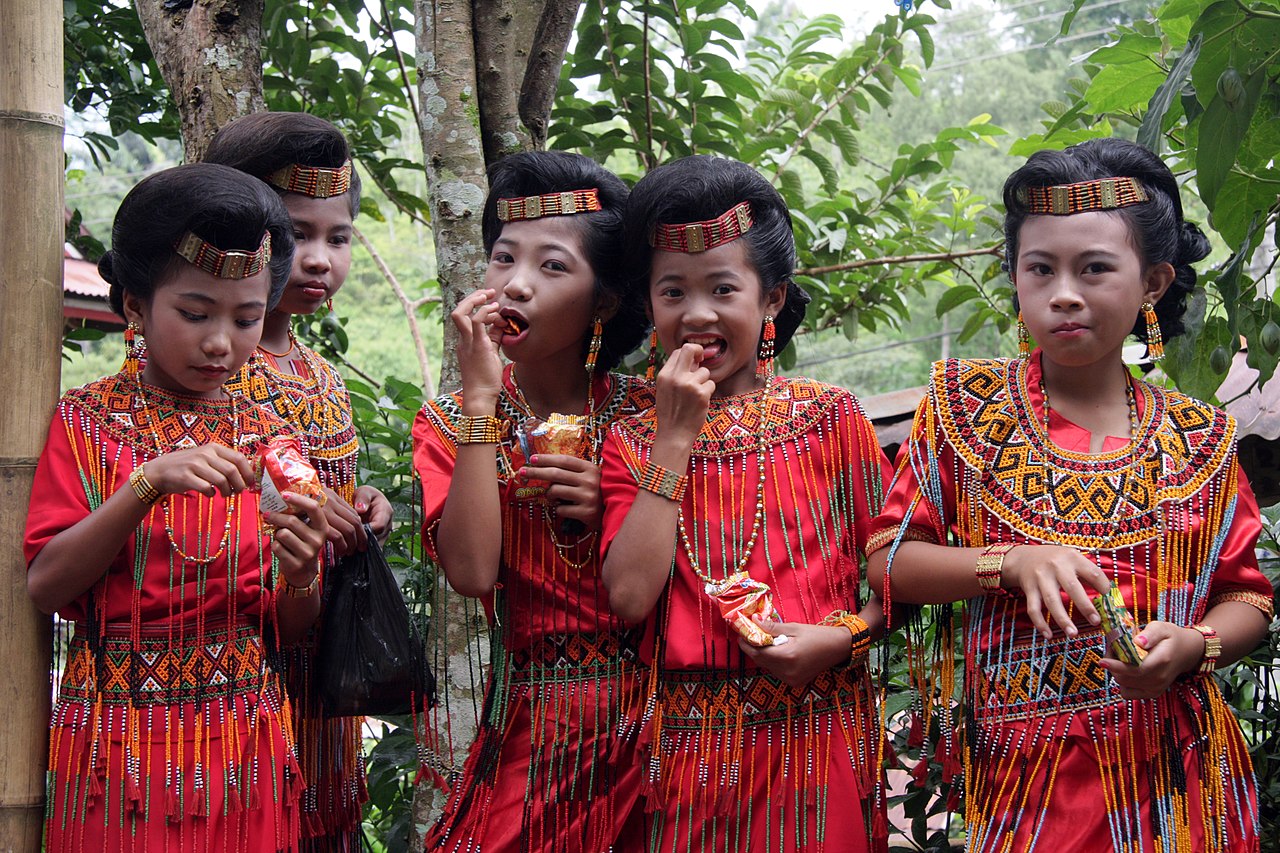 Family affiliation
Family is the primary social and political grouping in Torajan society. Each village is one extended family, the seat of which is the tongkonan, a traditional Torajan house. Each tongkonan has a name, which becomes the name of the village. The familial dons maintain village unity. Marriage between distant cousins (fourth cousins and beyond) is a common practice that strengthens kinship. Toraja society prohibits marriage between close cousins (up to and including the third cousin)—except for nobles, to prevent the dispersal of property. Kinship is actively reciprocal, meaning that the extended family helps each other farm, share buffalo rituals, and pay off debts.
Family affiliation
Family is the primary social and political grouping in Torajan society. Each village is one extended family, the seat of which is the tongkonan, a traditional Torajan house. Each tongkonan has a name, which becomes the name of the village. The familial dons maintain village unity. Marriage between distant cousins (fourth cousins and beyond) is a common practice that strengthens kinship. Toraja society prohibits marriage between close cousins (up to and including the third cousin)—except for nobles, to prevent the dispersal of property. Kinship is actively reciprocal, meaning that the extended family helps each other farm, share buffalo rituals, and pay off debts.
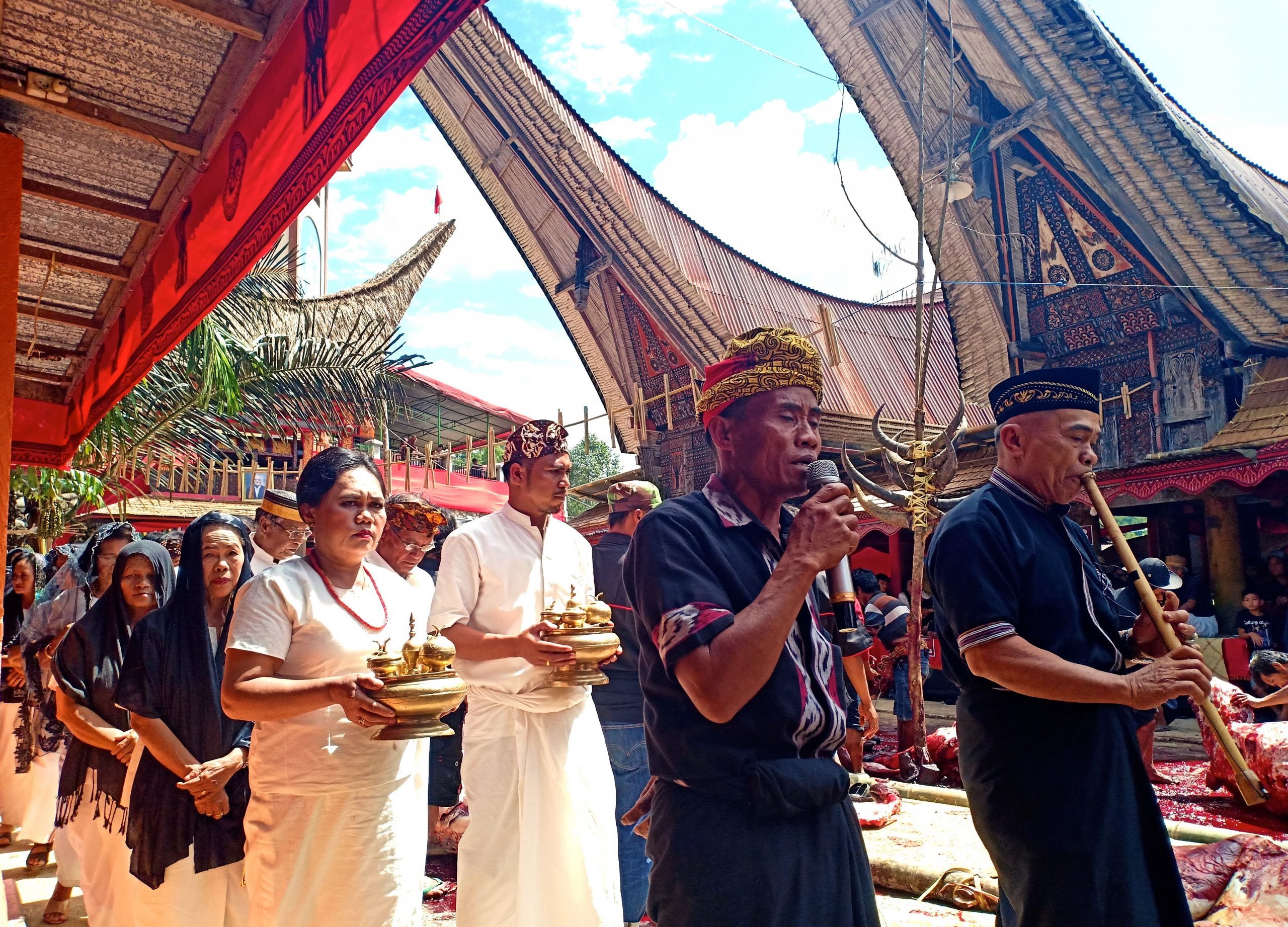 Class affiliation
In early Toraja society, family relationships were tied closely to social class. There were three strata: nobles, commoners, and slaves (slavery was abolished in 1909 by the Dutch East Indies government). Class was inherited through the mother. It was taboo, therefore, to marry “down” with a woman of lower class. On the other hand, marrying a woman of higher class could improve the status of the next generation. The nobility’s condescending attitude toward the commoners is still maintained today for reasons of family prestige.
Religious Affiliation
Toraja’s indigenous belief system is polytheistic animism, called aluk, or “the way” (sometimes translated as “the law”). Aluk is not just a belief system; it is a combination of law, religion, and habit. Aluk governs social life, agricultural practices, and ancestral rituals. In 1969, Aluk To Dolo (“the way of ancestors”) was legalised as a sect of Agama Hindu Dharma, the official name of Hinduism in Indonesia. The traditional Toraja religion is today only practiced by a small minority.
Class affiliation
In early Toraja society, family relationships were tied closely to social class. There were three strata: nobles, commoners, and slaves (slavery was abolished in 1909 by the Dutch East Indies government). Class was inherited through the mother. It was taboo, therefore, to marry “down” with a woman of lower class. On the other hand, marrying a woman of higher class could improve the status of the next generation. The nobility’s condescending attitude toward the commoners is still maintained today for reasons of family prestige.
Religious Affiliation
Toraja’s indigenous belief system is polytheistic animism, called aluk, or “the way” (sometimes translated as “the law”). Aluk is not just a belief system; it is a combination of law, religion, and habit. Aluk governs social life, agricultural practices, and ancestral rituals. In 1969, Aluk To Dolo (“the way of ancestors”) was legalised as a sect of Agama Hindu Dharma, the official name of Hinduism in Indonesia. The traditional Toraja religion is today only practiced by a small minority.
 Family affiliation
Family is the primary social and political grouping in Torajan society. Each village is one extended family, the seat of which is the tongkonan, a traditional Torajan house. Each tongkonan has a name, which becomes the name of the village. The familial dons maintain village unity. Marriage between distant cousins (fourth cousins and beyond) is a common practice that strengthens kinship. Toraja society prohibits marriage between close cousins (up to and including the third cousin)—except for nobles, to prevent the dispersal of property. Kinship is actively reciprocal, meaning that the extended family helps each other farm, share buffalo rituals, and pay off debts.
Family affiliation
Family is the primary social and political grouping in Torajan society. Each village is one extended family, the seat of which is the tongkonan, a traditional Torajan house. Each tongkonan has a name, which becomes the name of the village. The familial dons maintain village unity. Marriage between distant cousins (fourth cousins and beyond) is a common practice that strengthens kinship. Toraja society prohibits marriage between close cousins (up to and including the third cousin)—except for nobles, to prevent the dispersal of property. Kinship is actively reciprocal, meaning that the extended family helps each other farm, share buffalo rituals, and pay off debts.
 Class affiliation
In early Toraja society, family relationships were tied closely to social class. There were three strata: nobles, commoners, and slaves (slavery was abolished in 1909 by the Dutch East Indies government). Class was inherited through the mother. It was taboo, therefore, to marry “down” with a woman of lower class. On the other hand, marrying a woman of higher class could improve the status of the next generation. The nobility’s condescending attitude toward the commoners is still maintained today for reasons of family prestige.
Religious Affiliation
Toraja’s indigenous belief system is polytheistic animism, called aluk, or “the way” (sometimes translated as “the law”). Aluk is not just a belief system; it is a combination of law, religion, and habit. Aluk governs social life, agricultural practices, and ancestral rituals. In 1969, Aluk To Dolo (“the way of ancestors”) was legalised as a sect of Agama Hindu Dharma, the official name of Hinduism in Indonesia. The traditional Toraja religion is today only practiced by a small minority.
Class affiliation
In early Toraja society, family relationships were tied closely to social class. There were three strata: nobles, commoners, and slaves (slavery was abolished in 1909 by the Dutch East Indies government). Class was inherited through the mother. It was taboo, therefore, to marry “down” with a woman of lower class. On the other hand, marrying a woman of higher class could improve the status of the next generation. The nobility’s condescending attitude toward the commoners is still maintained today for reasons of family prestige.
Religious Affiliation
Toraja’s indigenous belief system is polytheistic animism, called aluk, or “the way” (sometimes translated as “the law”). Aluk is not just a belief system; it is a combination of law, religion, and habit. Aluk governs social life, agricultural practices, and ancestral rituals. In 1969, Aluk To Dolo (“the way of ancestors”) was legalised as a sect of Agama Hindu Dharma, the official name of Hinduism in Indonesia. The traditional Toraja religion is today only practiced by a small minority.
Language Varieties
0
Religions
0
(million) Total Population
0
Culture
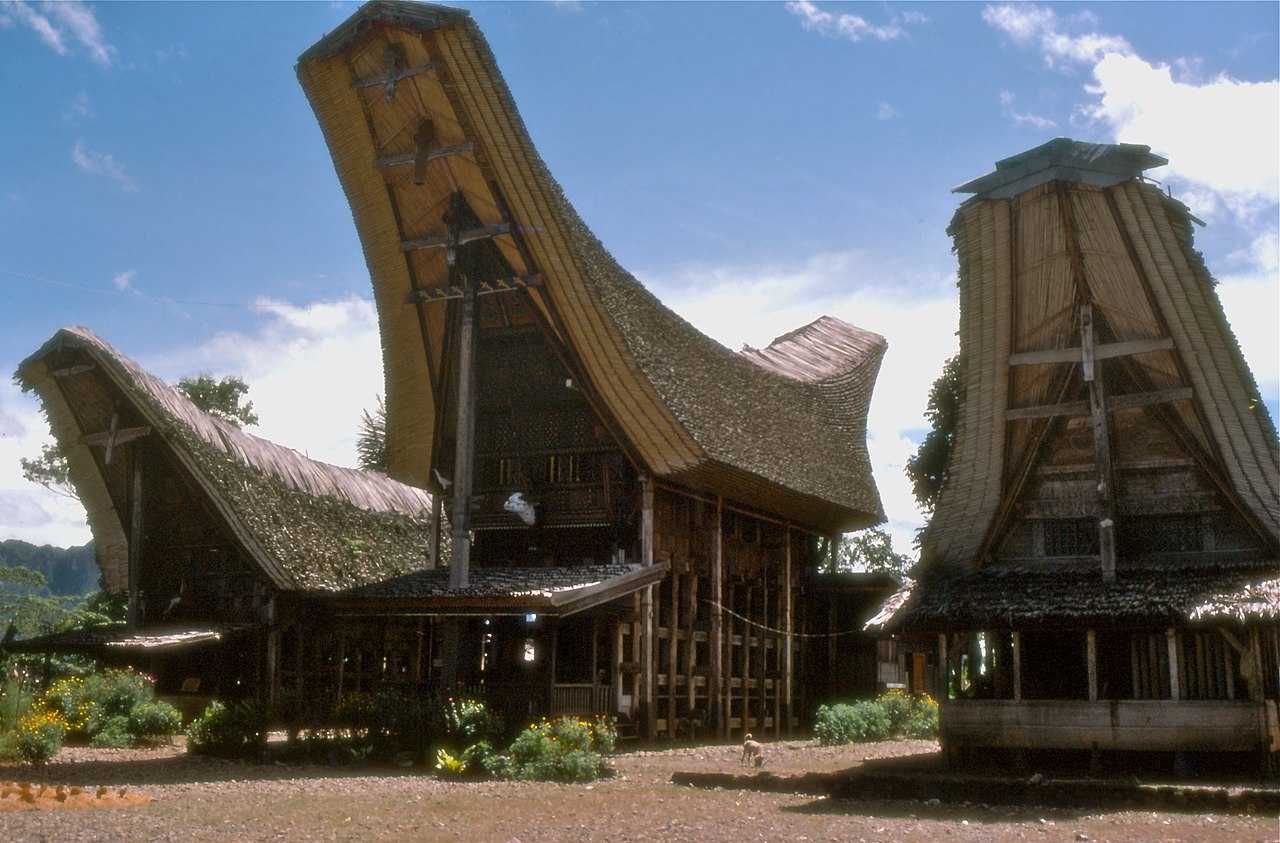 Tongkongan
Tongkonan are the traditional Torajan ancestral houses. They stand high on wooden piles, topped with a layered split-bamboo roof shaped in a sweeping curved arc, and they are incised with red, black, and yellow detailed wood carvings on the exterior walls. The word “tongkonan” comes from the Torajan tongkon (“to sit”).
Tongkonan are the center of Torajan social life. The rituals associated with the tongkonan are important expressions of Torajan spiritual life, and therefore all family members are impelled to participate, because symbolically the tongkonan represents links to their ancestors and to living and future kin.
Tongkongan
Tongkonan are the traditional Torajan ancestral houses. They stand high on wooden piles, topped with a layered split-bamboo roof shaped in a sweeping curved arc, and they are incised with red, black, and yellow detailed wood carvings on the exterior walls. The word “tongkonan” comes from the Torajan tongkon (“to sit”).
Tongkonan are the center of Torajan social life. The rituals associated with the tongkonan are important expressions of Torajan spiritual life, and therefore all family members are impelled to participate, because symbolically the tongkonan represents links to their ancestors and to living and future kin.
 The construction of a tongkonan is laborious work and is usually done with the help of the extended family. There are three types of tongkonan. The tongkonan layuk is the house of the highest authority, used as the “center of government”. The tongkonan pekamberan belongs to the family members who have some authority in local traditions. Ordinary family members reside in the tongkonan batu.
Architecture in the style of a tongkonan is still very common. Various administration buildings were built in this style in recent years, e.g. the Kecamatan building in Rantepao
The construction of a tongkonan is laborious work and is usually done with the help of the extended family. There are three types of tongkonan. The tongkonan layuk is the house of the highest authority, used as the “center of government”. The tongkonan pekamberan belongs to the family members who have some authority in local traditions. Ordinary family members reside in the tongkonan batu.
Architecture in the style of a tongkonan is still very common. Various administration buildings were built in this style in recent years, e.g. the Kecamatan building in Rantepao
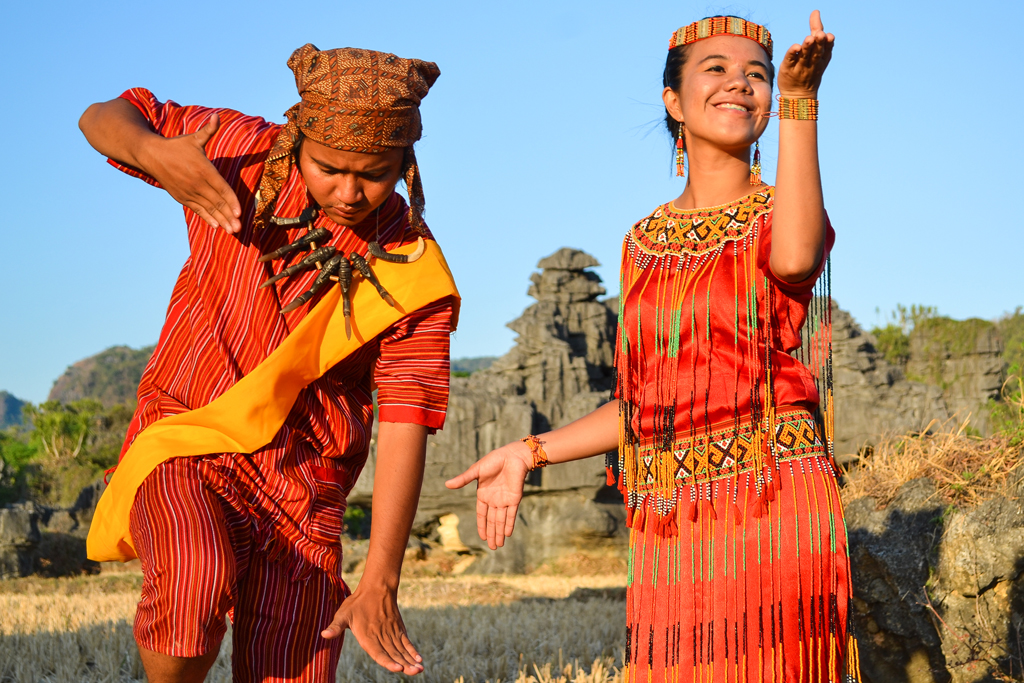 Dance and Music
Torajans perform dances on several occasions, most often during their elaborate funeral ceremonies. They dance to express their grief, and to honour and even cheer the deceased person because he is going to have a long journey in the afterlife. First, a group of men form a circle and sing a monotonous chant throughout the night to honour the deceased (a ritual called Ma’badong). This is considered by many Torajans to be the most important component of the funeral ceremony.
Dance and Music
Torajans perform dances on several occasions, most often during their elaborate funeral ceremonies. They dance to express their grief, and to honour and even cheer the deceased person because he is going to have a long journey in the afterlife. First, a group of men form a circle and sing a monotonous chant throughout the night to honour the deceased (a ritual called Ma’badong). This is considered by many Torajans to be the most important component of the funeral ceremony.
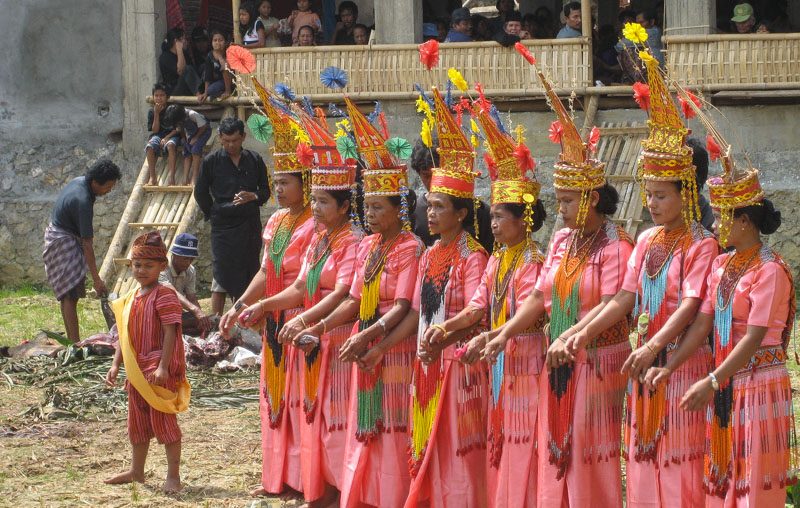 On the second funeral day, the Ma’randing warrior dance is performed to praise the courage of the deceased during life. Several men perform the dance with a sword, a large shield made from buffalo skin, a helmet with a buffalo horn, and other ornamentation. The Ma’randing dance precedes a procession in which the deceased is carried from a rice barn to the rante, the site of the funeral ceremony.
On the second funeral day, the Ma’randing warrior dance is performed to praise the courage of the deceased during life. Several men perform the dance with a sword, a large shield made from buffalo skin, a helmet with a buffalo horn, and other ornamentation. The Ma’randing dance precedes a procession in which the deceased is carried from a rice barn to the rante, the site of the funeral ceremony.
 During the funeral, elder women perform the Ma’katia dance while singing a poetic song and wearing a long feathered costume. The Ma’akatia dance is performed to remind the audience of the generosity and loyalty of the deceased person. After the bloody ceremony of buffalo and pig slaughter, a group of boys and girls clap their hands while performing a cheerful dance called Ma’dondan.
During the funeral, elder women perform the Ma’katia dance while singing a poetic song and wearing a long feathered costume. The Ma’akatia dance is performed to remind the audience of the generosity and loyalty of the deceased person. After the bloody ceremony of buffalo and pig slaughter, a group of boys and girls clap their hands while performing a cheerful dance called Ma’dondan.
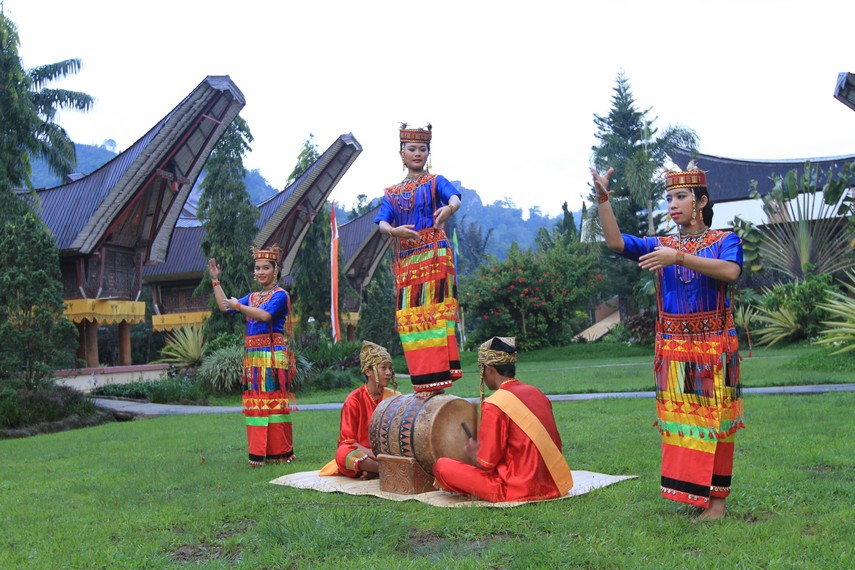 As in other agricultural societies, Torajans dance and sing during harvest time. The Ma’bugi dance celebrates the thanksgiving event, and the Ma’gandangi dance is performed while Torajans are pounding rice.
There are several war dances, such as the Manimbong dance performed by men, followed by the Ma’dandan dance performed by women.
As in other agricultural societies, Torajans dance and sing during harvest time. The Ma’bugi dance celebrates the thanksgiving event, and the Ma’gandangi dance is performed while Torajans are pounding rice.
There are several war dances, such as the Manimbong dance performed by men, followed by the Ma’dandan dance performed by women.
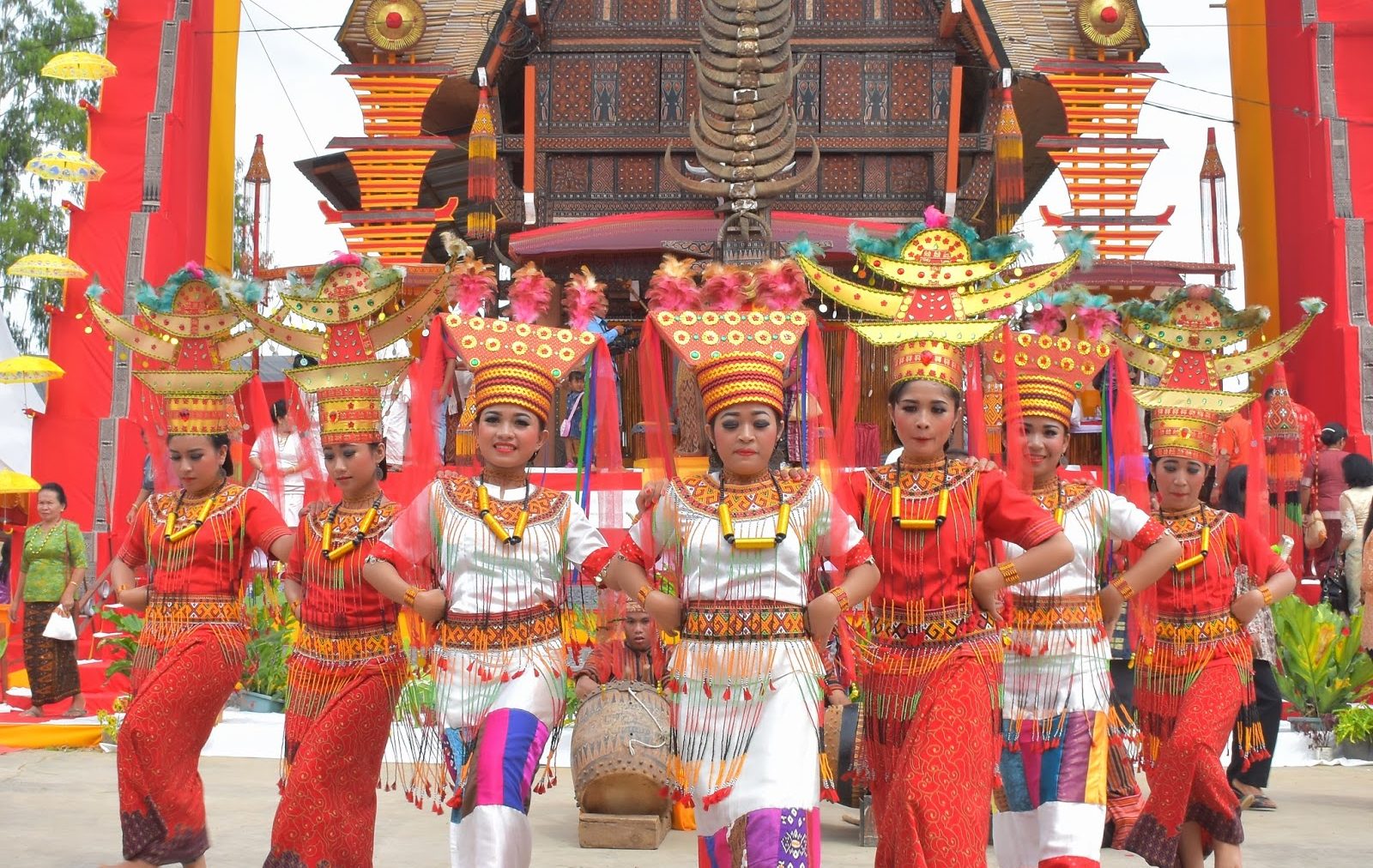 The aluk religion governs when and how Torajans dance. A dance called Ma’bua can be performed only once every 12 years. Ma’bua is a major Toraja ceremony in which priests wear a buffalo head and dance around a sacred tree.
A traditional musical instrument of the Toraja is a bamboo flute called a Pa’suling (suling is an Indonesian word for flute). This six-holed flute (not unique to the Toraja) is played at many dances, such as the thanksgiving dance Ma’bondensan, where the flute accompanies a group of shirtless, dancing men with long fingernails.
The Toraja have indigenous musical instruments, such as the Pa’pelle (made from palm leaves) and the Pa’karombi (the Torajan version of a jaw harp). The Pa’pelle is played during harvest time and at house inauguration ceremonies.
The aluk religion governs when and how Torajans dance. A dance called Ma’bua can be performed only once every 12 years. Ma’bua is a major Toraja ceremony in which priests wear a buffalo head and dance around a sacred tree.
A traditional musical instrument of the Toraja is a bamboo flute called a Pa’suling (suling is an Indonesian word for flute). This six-holed flute (not unique to the Toraja) is played at many dances, such as the thanksgiving dance Ma’bondensan, where the flute accompanies a group of shirtless, dancing men with long fingernails.
The Toraja have indigenous musical instruments, such as the Pa’pelle (made from palm leaves) and the Pa’karombi (the Torajan version of a jaw harp). The Pa’pelle is played during harvest time and at house inauguration ceremonies.
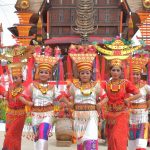
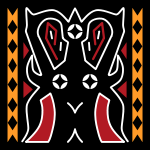
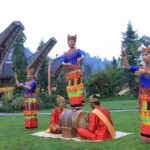
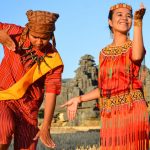
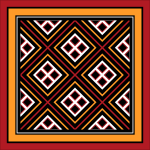
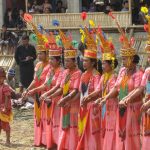
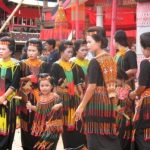


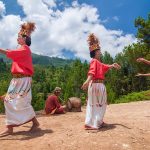


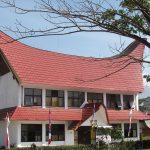
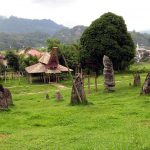

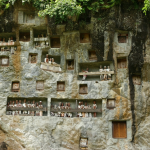
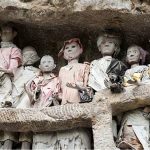

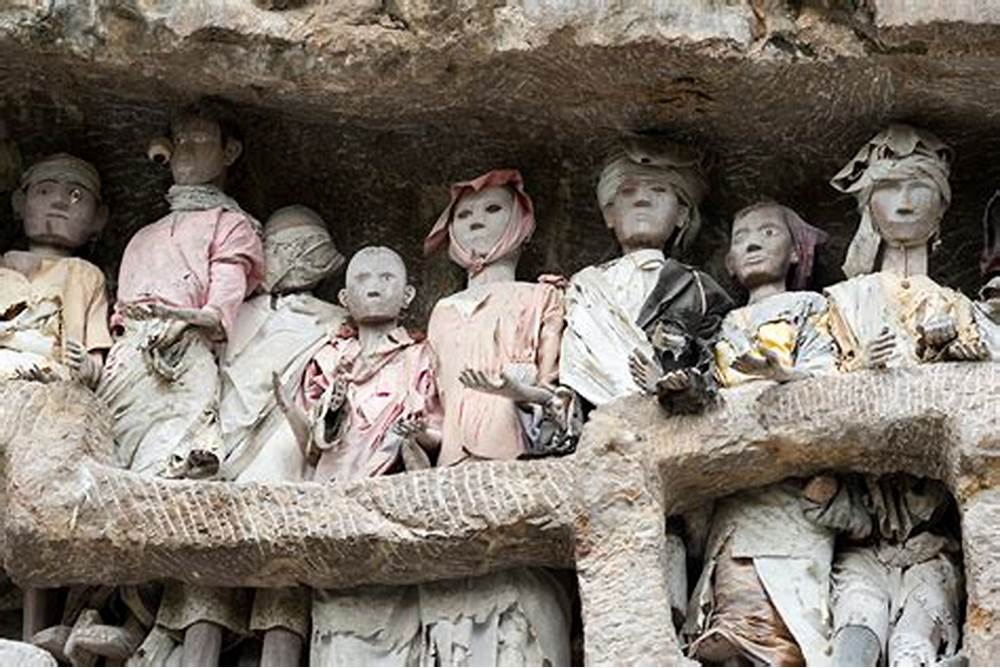 Funeral Rites
In Toraja society, the funeral ritual is the most elaborate and expensive event. The richer and more powerful the individual, the more expensive is the funeral. In the aluk religion, only nobles have the right to have an extensive death feast.
The death feast of a nobleman is usually attended by thousands and lasts for several days.
Funeral Rites
In Toraja society, the funeral ritual is the most elaborate and expensive event. The richer and more powerful the individual, the more expensive is the funeral. In the aluk religion, only nobles have the right to have an extensive death feast.
The death feast of a nobleman is usually attended by thousands and lasts for several days.
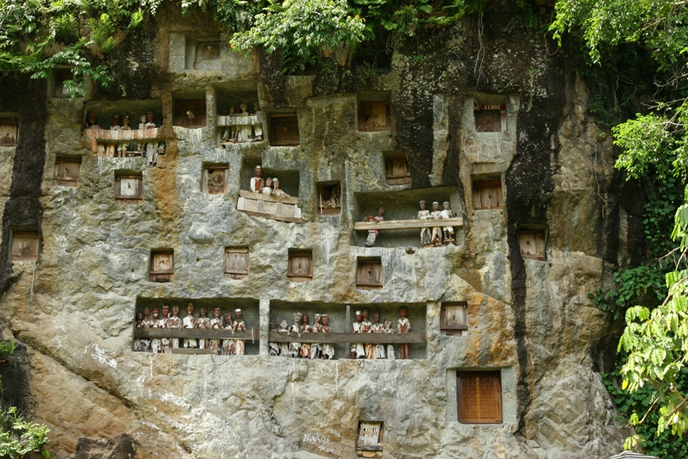 A ceremonial site, called rante, is usually prepared in a large, grassy field where shelters for audiences, rice barns, and other ceremonial funeral structures are specially made by the deceased’s family.
Flute music, funeral chants, songs and poems, and crying and wailing are traditional Toraja expressions of grief with the exceptions of funerals for young children, and poor, low-status adults.
The ceremony is often held weeks, months, or years after the death so that the deceased’s family can raise the significant funds needed to cover funeral expenses.
Torajans traditionally believe that death is not a sudden, abrupt event, but a gradual process toward Puya (the land of souls, or afterlife). During the waiting period, the body of the deceased is wrapped in several layers of cloth and kept under the tongkonan. The soul of the deceased is thought to linger around the village until the funeral ceremony is completed, after which it begins its journey to Puya.
A ceremonial site, called rante, is usually prepared in a large, grassy field where shelters for audiences, rice barns, and other ceremonial funeral structures are specially made by the deceased’s family.
Flute music, funeral chants, songs and poems, and crying and wailing are traditional Toraja expressions of grief with the exceptions of funerals for young children, and poor, low-status adults.
The ceremony is often held weeks, months, or years after the death so that the deceased’s family can raise the significant funds needed to cover funeral expenses.
Torajans traditionally believe that death is not a sudden, abrupt event, but a gradual process toward Puya (the land of souls, or afterlife). During the waiting period, the body of the deceased is wrapped in several layers of cloth and kept under the tongkonan. The soul of the deceased is thought to linger around the village until the funeral ceremony is completed, after which it begins its journey to Puya.

 Wood Carving
To express social and religious concepts, Torajans carve wood, calling it Pa’ssura (or “the writing”). Wood carvings are therefore Toraja’s cultural manifestation.
Each carving receives a special name, and common motifs are animals and plants that symbolise some virtue; water plants and animals, such as crabs, tadpoles and water weeds, are commonly found to symbolise fertility.
Wood Carving
To express social and religious concepts, Torajans carve wood, calling it Pa’ssura (or “the writing”). Wood carvings are therefore Toraja’s cultural manifestation.
Each carving receives a special name, and common motifs are animals and plants that symbolise some virtue; water plants and animals, such as crabs, tadpoles and water weeds, are commonly found to symbolise fertility.

 Torajan wood carvings are composed of numerous square panels, each of which can represent various things.
Regularity and order are common features in Toraja wood carving (see table below), as well as abstracts and geometrical designs.
Nature is frequently used as the basis of Toraja’s ornaments, because nature is full of abstractions and geometries with regularities and ordering.
Torajan wood carvings are composed of numerous square panels, each of which can represent various things.
Regularity and order are common features in Toraja wood carving (see table below), as well as abstracts and geometrical designs.
Nature is frequently used as the basis of Toraja’s ornaments, because nature is full of abstractions and geometries with regularities and ordering.
